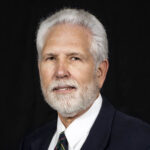Introduction (Acts 1: 1-1 1)
A: The Name
The name itself may be overlooked as a resource to understanding this book. Sometime we just refer to it as “Acts”. What does that conjure up in your mind? For me for about 20 years I pictured a long handled instrument with a head sharpened on one side, used for cutting down trees. An “Ax”. Occasionally you hear , Ax of the Apostles; that’s one way for an apostle to get your attention. But that’s not it, it’s “Acts:” accomplishments, actions, exploits, achievements, deeds, of who? The Apostles
The earliest manuscripts that were found did bear the title “‘Acts”” or “‘The Acts”. Thus calling it acts is totally appropriate but not self serving in explanation of what you are reading.
The book is Called “‘the Acts of the Apostles;” rather, it is the acts of two of them:
- Peter (chap. 1-12), and
- Paul (chap. 13-26)
John is mentioned three times as a co-worker with of Peter, James because he is martyred. No other acts of the other eight Apostles are mentioned. It doesn’t mean the others were dormant, it just is not a record of their doings. Such as a record being compiled about the work in Mexico: when you read about, Clarence, Leon, Don, Jay, it doesn’t mean Marvin, Buzz, Roland etc. weren’t doing anything.
Following the four gospels , which are four generally consistent versions written by different authors regarding the life of Christ, comes the this book, which is a straight forward history of the development of the Church of Christ.
It deals with the slow growth of Christianity, and the challenges of those who would take it forth. It began in Jerusalem following the crucifixion of Christ, then slowly widens, finally reaching Rome itself. As it widens, Christianity shifts away from the Jewish and towards the Gentiles, which is largely the doings of Apostle Paul.

Brian McIndoo is a member and Apostle in the Church of Christ, serving as a missionary in Africa. Brian resides with his family in Independence, Missouri.